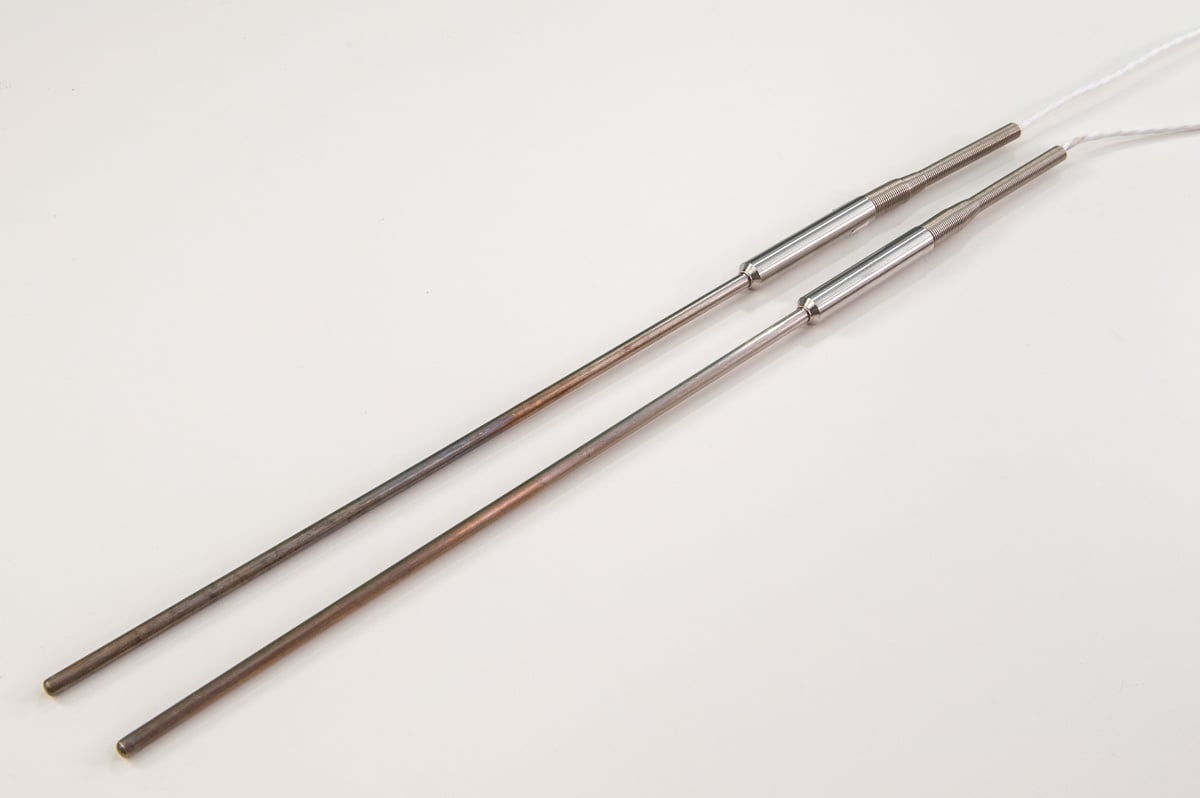Care and Handling of Standard Platinum Resistance Thermometers (SPRTs)
Standard Platinum Resistance Thermometers (SPRTs) are essential for precise temperature measurements in both calibration laboratories and high-accuracy industrial applications. However, due to their sensitivity and delicate construction, these instruments require meticulous care. This document outlines best practices for handling SPRTs, focusing on storage, use, and shipping.

- Storage
Proper storage of SPRTs is crucial to maintaining their stability and minimizing the risk of damage. Incorrect storage can lead to contamination, mechanical stress, or drift in resistance, all of which can degrade accuracy.
- Environment: Store SPRTs in a clean, dust-free, and low-humidity environment. It is advisable to maintain a stable temperature in the storage area to prevent thermal stress, as even small constant fluctuations can affect the sensor’s platinum wire.
- Physical Protection: SPRTs should be placed in a padded case, ensuring that the sensor tip is suspended and not in contact with any hard surfaces. This minimizes the risk of mechanical shocks during handling.
- Avoid Contamination: Store SPRTs in a controlled atmosphere (preferably inert or vacuum) to reduce exposure to contaminants like dust or moisture that could oxidize the platinum wire and lead to resistance changes. Oxidation at moderate temperatures can significantly impact the thermometer’s accuracy.
- Use
SPRTs must be handled with extreme care during use to avoid mechanical, thermal, or environmental damage that could alter their resistance and degrade their precision.
- Mechanical Handling: Avoid applying any force or vibrations to the SPRT. Even minor impacts can introduce mechanical strain, leading to changes in the sensor’s resistance, affecting its calibration.
- Insertion and Removal: Handle the SPRT gently when inserting or removing it from wells or calibration equipment. Sudden or rough handling can bend or damage the sensitive platinum coil inside the thermometer. Use steady and controlled movements to avoid abrupt shocks.
- Temperature Transition Rates: The rate at which an SPRT is exposed to temperature changes is a critical factor in preventing thermal shock or mechanical stress to the platinum sensor:
- Heating and Cooling Rates: SPRTs should be heated and cooled at a controlled, gradual rate to prevent thermal strain. A general recommendation is to limit the rate of temperature change to 100°C per hour when heating or cooling an SPRT.
- High-Temperature Use: After exposure to temperatures above 500°C, the SPRT should be allowed to cool slowly to avoid thermal shocks that could introduce crystalline defects into the platinum wire. A recommended practice is to cool the thermometer at a rate of approximately 100°C per hour down to under 500°C, at which point it can be removed from the heat source without risking damage.
- Annealing Post-Use: Annealing is highly recommended after using SPRTs at elevated temperatures. This process helps restore the wire's structure by eliminating strain and lattice defects caused by thermal cycling.
- Shipping
Due to their delicate structure, SPRTs are particularly susceptible to damage during shipping. Implementing robust protective measures is essential to preserving their accuracy throughout transit.
- Protective Packaging: Use high-quality, impact-resistant packaging materials, such as foam or bubble wrap, to cushion the SPRT during transport. Ensure that the thermometer is immobilized within the package to prevent movement, which could introduce mechanical shock.
- Temperature Stability: Where possible, SPRTs should be shipped in environments with minimal temperature fluctuations. Exposure to extreme temperature variations during shipping can induce thermal stresses that alter the sensor’s resistance.
- Shock and Vibration Prevention: Clearly label shipping containers to indicate that sensitive instruments are inside, and request careful handling from the logistics providers. SPRTs can sustain permanent damage from excessive vibration or impact during transit.
- Importance of Temperature Stability
Temperature stability is a cornerstone of SPRT accuracy. Sudden or extreme temperature variations can introduce strain into the platinum wire, leading to calibration drift or even permanent damage. Following the recommendations for gradual heating and cooling is vital to maintaining the thermometer's long-term precision. Rapid temperature changes can result in mechanical or thermal shocks that are often irreparable without recalibration or even replacement.

Conclusion
The longevity and accuracy of Standard Platinum Resistance Thermometers depend on the consistent application of careful handling practices. Following the recommended procedures for storage, use, shipping, and managing temperature transitions ensures that SPRTs remain stable and reliable for high-precision measurements. These best practices will help minimize mechanical and thermal stresses, thus preserving the instrument's calibration and extending its operational life.
Looking for a PRT & SPRT Calibration Service? Take a closer look at how we calibrate PRT & SPRT temperature units here.
You Can Rely on Bagan Calibration Services
We pride ourselves on our premier customer service, which has allowed us to maintain relationships with customers since the beginning. Many of our customers range from Fortune 500 companies to privately owned specialty companies across the U.S.A and other countries. Our proprietary Management Information and Reporting System, BaganTrack gives you direct access to your customer service representative, certificates, master gauge list, and more. Additionally, BaganTrack is compliant to ISO 9001:2015. It is our goal to give you the best experience possible as your calibration and technical service provider.
Need Calibration Services? Fill out the form below and one of our specialists will provide assistance!
©2025 Richard J. Bagan, Inc. All rights reserved.